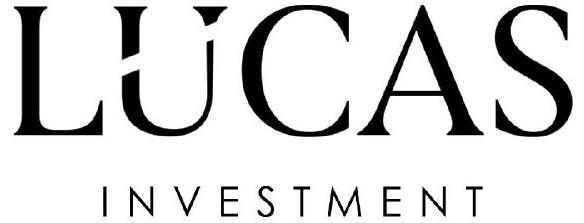In an era of rapid technological advancement and shifting global financial dynamics, the United States government appears poised to leverage blockchain technology to maintain its dominance in international payments. At the center of this potential strategy is XRP, the native cryptocurrency of the XRP Ledger, developed by Ripple Labs. Known for its speed, cost-efficiency, and scalability, XRP has emerged as a compelling tool for revolutionizing cross-border transactions.
The Case for XRP in International Payments
The traditional global payments system, dominated by mechanisms like SWIFT and correspondent banking, has long been criticized for its inefficiencies. Transactions can take days to settle, incur high fees, and require pre-funded accounts in multiple currencies—challenges that have persisted despite the dollar's status as the world's reserve currency. XRP, by contrast, offers a transformative alternative. Transactions on the XRP Ledger settle in 3-5 seconds, with fees as low as a fraction of a cent, and the cryptocurrency can serve as a bridge asset between fiat currencies, eliminating the need for pre-funding.
Ripple Labs has spent over a decade building infrastructure to integrate XRP into financial systems worldwide. Its RippleNet platform connects banks and payment providers, while its On-Demand Liquidity (ODL) service uses XRP to facilitate instant cross-border transfers. These capabilities align with the U.S. government's interest in maintaining economic leadership, particularly as competitors like China advance their own digital currency initiatives, such as the digital yuan.
A Strategic Shift: U.S. Government’s Crypto Ambitions
Recent developments suggest the U.S. government is warming to the idea of integrating cryptocurrencies into its financial strategy. On January 23, 2025, President Donald Trump signed an executive order titled "Strengthening American Leadership in Digital Financial Technology," directing the Treasury Department to explore a strategic cryptocurrency reserve. While Bitcoin has often dominated such discussions, XRP’s unique attributes—its efficiency in payments and Ripple’s established partnerships with financial institutions—make it a strong candidate for inclusion.
The Federal Reserve, too, has shown interest in XRP-related technology. Reports indicate that since 2017, the Fed has been beta-testing XRP infrastructure through partnerships with Volante Technologies and RippleNet. A 2023 document from the Federal Reserve, "The U.S. Path to Faster Payments," explicitly mentioned Ripple’s solution for real-time cross-border payments, omitting references to other major cryptocurrencies like Bitcoin or Ethereum. This suggests a recognition of XRP’s potential to enhance the U.S.-led financial system.
Moreover, Ripple’s launch of RLUSD—a USD-backed stablecoin on the XRP Ledger and Ethereum blockchains—in December 2024 adds another layer to this narrative. RLUSD, designed for payments, liquidity, and decentralized finance (DeFi), is fully backed by U.S. dollar deposits and government bonds, with monthly third-party audits ensuring transparency. If the U.S. government approves RLUSD for systemic use, it could effectively sanction the XRP Ledger as a trusted blockchain, amplifying its role in global finance.
Mechanisms of Dominance
How might the U.S. government operationalize XRP to dominate international payments? Several speculative yet plausible scenarios emerge:
- Integration with FedNow and Beyond: The Federal Reserve’s FedNow service, launched to enable instant domestic payments, could be extended internationally by leveraging XRP’s capabilities. By integrating XRP or RLUSD into FedNow, the U.S. could offer a faster, cheaper alternative to SWIFT, reinforcing the dollar’s dominance while modernizing its infrastructure.
- Strategic Reserve Inclusion: The U.S. could acquire a significant portion of XRP—potentially from Ripple’s escrow, which holds roughly 48 billion tokens—as part of a digital asset reserve. With control over a large XRP stash, the U.S. could influence its adoption and price, ensuring it remains a dollar-centric tool.
- Regulatory Clarity and Adoption: The SEC’s lawsuit against Ripple, which began in 2020, reached a turning point in 2023 when a judge ruled that XRP sold on public exchanges was not a security. This clarity has bolstered XRP’s legitimacy, and a cooperative stance from Ripple—evidenced by CEO Brad Garlinghouse’s meetings with Trump in 2025—could pave the way for government-backed adoption. By setting favorable regulations, the U.S. could encourage its banks to use XRP, outpacing rivals hesitant to embrace crypto.
- Global Partnerships: Ripple’s existing network, spanning over 70 countries and including institutions like Santander and Standard Chartered, provides a ready-made framework. The U.S. could incentivize allies to adopt XRP-based systems, creating a dollar-aligned payments network that sidelines competitors like China’s Cross-Border Interbank Payment System (CIPS).
Implications and Challenges
If successful, this strategy could cement U.S. dominance in international payments for decades. XRP’s speed and cost-effectiveness would make dollar-based transactions more attractive, countering de-dollarization efforts by BRICS nations and others. The XRP Ledger’s interoperability with central bank digital currencies (CBDCs)—already being tested in places like Montenegro and Palau—could further integrate it into a U.S.-led financial ecosystem.
The Road Ahead
As of March 3, 2025, the U.S. government has not explicitly confirmed plans to dominate international payments with XRP. Yet, the pieces are falling into place: Ripple’s technological prowess, the Fed’s exploratory efforts, and a shifting political appetite for crypto innovation all point to a potential pivot. Whether through a strategic reserve, RLUSD adoption, or a reimagined payments infrastructure, XRP could become a linchpin in the U.S.’s bid to stay ahead in the global financial race.
The world is watching. If the U.S. flips the switch—integrating XRP into its financial arsenal—it could redefine international payments, blending the dollar’s legacy with blockchain’s future. For now, the question remains: will XRP be the tool that keeps America at the helm of global finance, or will it merely be a footnote in the broader crypto saga? Only time will tell, but the stakes have never been higher.


